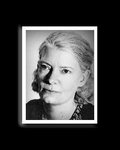Casey O'Leary pedals to her dream job, towing a shovel, a hoe, a rake and a flat of tiny vegetable starts on her bike trailer. Her rubber boots shed yesterday's mud as she rides.
Her dog, Norm, who has been waiting all morning, runs alongside her on their way to a small plot of land - one of three that O'Leary cultivates in Boise's Collister neighborhood.
"I used to think I had to get out of the city to get back to nature," O'Leary said. "Urban farming is the ideal interface between city and country."
You won't find O'Leary at the farmers market. She already has sold her harvest to 25 shareholders, or members of her CSA farm. They've paid upfront for 18 weeks of fresh food.
"My members just cherish the work I do," O'Leary said. "It's because of them that I'm able to have this absolutely beautiful life that I love so much."
WHAT'S A CSA?
Community-supported agriculture is a mouthful to say, but it is an easy idea to grasp.
Members agree to pay farmers in advance of planting for a season of food. That gives farmers money when they need it most, in early spring.
Members receive a guaranteed source of fresh produce and the security of knowing where their food comes from, how it was grown and who grew it.
"I like to buy as much as I can from the farmer directly," said Nina Bied, a CSA member of Morning Owl Farm in Southeast Boise. "Food is our medicine. If we eat the proper food, why would our bodies break down?"
Farmers and members also share the risk of crop failure, which helps keep small-acreage farms in business.
Most farmers have a drop site for vegetable pickup once a week, although arrangements vary. For $4 extra a week, for example, O'Leary will make a home delivery, by bicycle.
To market directly to eaters, farmers who want to use a CSA model often must learn to navigate the Internet, network among social 
"There's a myth that it's the D students who end up on the farm," O'Leary said. "I've never been more intellectually challenged in my life."
Since the publication of recent books "The Omnivore's Dilemma" by Michael Pollan and "Animal, Vegetable, Miracle" by Barbara Kingsolver, the idea of eating locally grown food has swept into the national consciousness, O'Leary said.
Shares of her farm sold out last fall, and by March 15, most CSA memberships in the Treasure Valley were taken.
Despite the spark in interest, only about 10 farms in the Treasure Valley offer CSAs. Several of them are profiled here. Each has modified the traditional model to fit its needs.
CHANGING FOOD CULTURE
Eaters in the United States usually decide what's for dinner while contemplating a large selection of produce from around the country and the world.
The CSA model turns that culture on its head. A member starts with a bag of food and makes meals with what's inside.
A typical share feeds a family of four. Some farmers sell half shares, and others offer work opportunities in exchange for shares. Most shares in Treasure Valley farms cost $300-$550 for 18-22 weeks of food.
Mary Ann Newcomer has a share in O'Leary's CSA.
"The first year, it was hard to keep up with the amount we got," she said. "I ended up making greens the centerpiece of the meal and pushed the store-bought chicken and fish to the side."
Eating what's growing in season can be a challenge. Many CSA farmers provide recipes and helpful hints with their produce every week to introduce members to vegetables they've never seen before.
MORNING OWL FARM
Because CSA farmers have to supply food every week, about 20 percent of the vegetables they grow no one has heard of, said Mary Rohlfing, who operates Morning Owl Farm in East Boise.
But not everyone wants to add exotic vegetables to their diet. This year, Rohlfing is trying something new with her CSA. She's setting up a farm stand on Wednesday nights, where members can buy what they want with their pre-paid shares. The stand will be open to the public on Thursday nights.
"My fear is, what if everyone wants carrots?" she said. "What about the bok choy?"
Nina Bied, a member of Rohlfing's CSA, said she's excited about the farm stand but never had a problem getting her two kids to eat vegetables.
"I teach my children about all the vegetables and fruits," she said. "To them, whatever I cook for them is great."
Rohlfing started her CSA five years ago because she liked the idea of being connected to the people who ate the food she grew. It is that connection - the phone call in February from a member having tomato dreams - that keeps her farming, she said.
"You start with a love of your fellow species, and then you want to feed them all," Rohlfing said.
Rohlfing uses ducks, about 300 of them, to maintain the ecosystem on her farm. They eat the bugs and weeds, lay eggs and provide manure.
"We're becoming a no-till farm. We run the ducks," she said. "I don't have to run a tractor over three acres of land, and that's better for everybody."
Rohlfing recently received a $15,000 grant from Western Sustainable Agriculture Research Eduction. The program is supported by the U.S. Department of Agriculture.
She will study the viability of using ducks for many purposes on a farm. She will let 40 ducks graze on a pasture for three years as part of the study.
Research is nothing new for Rohlfing. In her past life, she was a tenured professor at BSU.
"Health insurance is a scary thing to let go of," she said.
Part of what motivated her to change her life was a conversation she had with her uncle shortly after the 9/11 attacks. Her uncle had walked home from his office in the World Trade Center.
"He said to me, 'You need to do what you want to do, and you need to be fearless,' " she said.
FARMING IN THE SUBURBS
Farmers for hire Doreen Guenther and Jenn Harrington signed a three-year contract to manage production at the Hidden Springs Community Farm.
When the subdivision was built, the developer saved the farm, Guenther said, which was certified as organic last year.
This is their first year running the CSA. Only five of the 26 acres will be in production.
"Having two brains is nice," Guenther said. "I can see why families want to do this together."
Guenther and Harrington offer 200 shares, as well as a work-share program - four hours of work a week in exchange for a share. Shares are open to anyone, not just residents of Hidden Springs; there still are some left.
"We did a preseason survey of former members," Harrington said. "They told us they want more of the basics."
NOT JUST VEGGIES
The Vogels used to raise just hogs on their Kuna farm. They exported the meat to Japan.
As the houses got closer, they felt the need to downsize and try to sell the meat in the Treasure Valley. Having a CSA is part of their farm's survival strategy.
"No way, if we expanded, would we recoup the money," said Debi Engelhardt-Vogel, who operates the farm with her husband, Eddie. "Doing this, we hope we can stay here longer."
According to a 2002 study by the American Farmland Trust, 1.2 million acres of farmland nationwide is lost annually to development - about two acres of farmland per minute.
In the six years between 1997 and 2003, Idaho lost 56,600 acres of farmland to urban development, according to the National Resources Inventory.
The Vogels raise hogs and cattle and will add about 100 chickens by midsummer. All the animals are born and raised in Kuna and butchered, frozen and USDA certified in Meridian.
"So much of the cost of meat comes from getting it places," Engelhardt-Vogel said. "When you buy meat at the store, you don't know where it came from."
The Vogels grow their own feed, sending the cattle out to pasture to forage for themselves. They don't use antibiotics or hormones, and their animals are left to grow at their own rate.
A full share in the Vogel's CSA includes 30 pounds of meat, pork and beef, for $107 a month plus tax. For subscriptions that are paid six months in advance, the Vogels pay the taxes.
"Some customers will buy a whole hog (140 pounds) and just take a beef subscription," Engelhardt-Vogel said.
They'll also have a stand at the Kuna Farmers Market.
Eddie Vogel's family has been in the hog business for more than 50 years. Debi moved to Kuna from Seattle after she and Eddie married 10 years ago.
"I hated pork when I lived in Seattle," she said. "It was tasteless. I had to marinate it."
FROM ORCHARD TO FIELD
Cathy and Chan Cabalo keep their bees in the fridge, so the pollinators think it is winter until the apple trees blossom.
The Cabalos started farming four years ago on Cathy's family orchard of about 1,000 trees. They grow four kinds of apples and three kinds of pears, along with pie cherries, prunes and plums.
"When we took over the farm, we assumed they had a clientele," Cathy Cabalo said. "Three years ago, we had a beautiful crop and no one to buy it."
She remembered how her dad used to talk about the Kuna Farmers Market, but it didn't exist when she moved home. So she and her husband set about reviving it.
"We used to go with whatever I could put in the back of a Suburban," she said.
The success of the Kuna Farmers Market led them to try a CSA this year for the first time. They plan to cultivate four acres of vegetables, a large part of which will be a you-pick pumpkin patch.
"I have to be able to fill the subscriptions and still have enough to go to market," Cathy Cabalo said. "My first number was 10, but I thought if I could do 10, I could do 20."
The Cabalos still have shares available.
Three years ago, they converted to organic practices because their daughter has allergies, Cathy said.
"We had a crop failure in the orchard when we were switching," Cathy said. "Every single apple had a sting here or a bite there. It takes a while to regain the balance."
The Cabalos feel the pressure from residential development encroaching on their farm.
They are teaming up with the Vogels to offer events, like an apple blossom festival, throughout the growing season to connect people from town with where their food comes from.
Plainly visible through the rows of bare trees in early spring, a McMansion sits at the far side of their orchard.
"Someday, somebody's gonna starve to death because we grew houses and not food," she said.
















